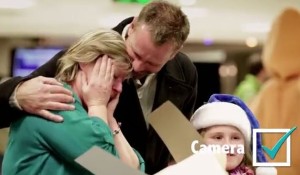I love Westjet. We have a couple of clients and developers based in Toronto, and Westjet is always our favorite carrier that flies there. Why? Take a look at this must-watch holiday video about gift-giving that Westjet put together, and maybe you’ll understand:
When Santa asked people what they wanted for Christmas, what did they say? Big-screen TVs, cameras, toys, etc.
Why didn’t they say cash? Because when Santa asks, it’s magic, and if there is magic involved, why not ask for something you normally couldn’t afford or wouldn’t splurge on? You’re not spending your own family’s money—apparently this is goodwill currency & equity you’ve built up all year from being “good”. You and your family have earned it. Live it up!

Can you imagine Santa giving out cash? Where is the joy, the fun in that? What type of experience would the receiver of the cash have had while everyone else was opening their gifts?
Happy Holidays, Channel-Movers! When rewarding your channel partners for being “good” all year, make sure you don’t flop by giving them cash. Give them something that builds loyalty and goodwill toward your brand.
Move the Channel,
Travis
PS Thanks for sharing this video with me Anthony

